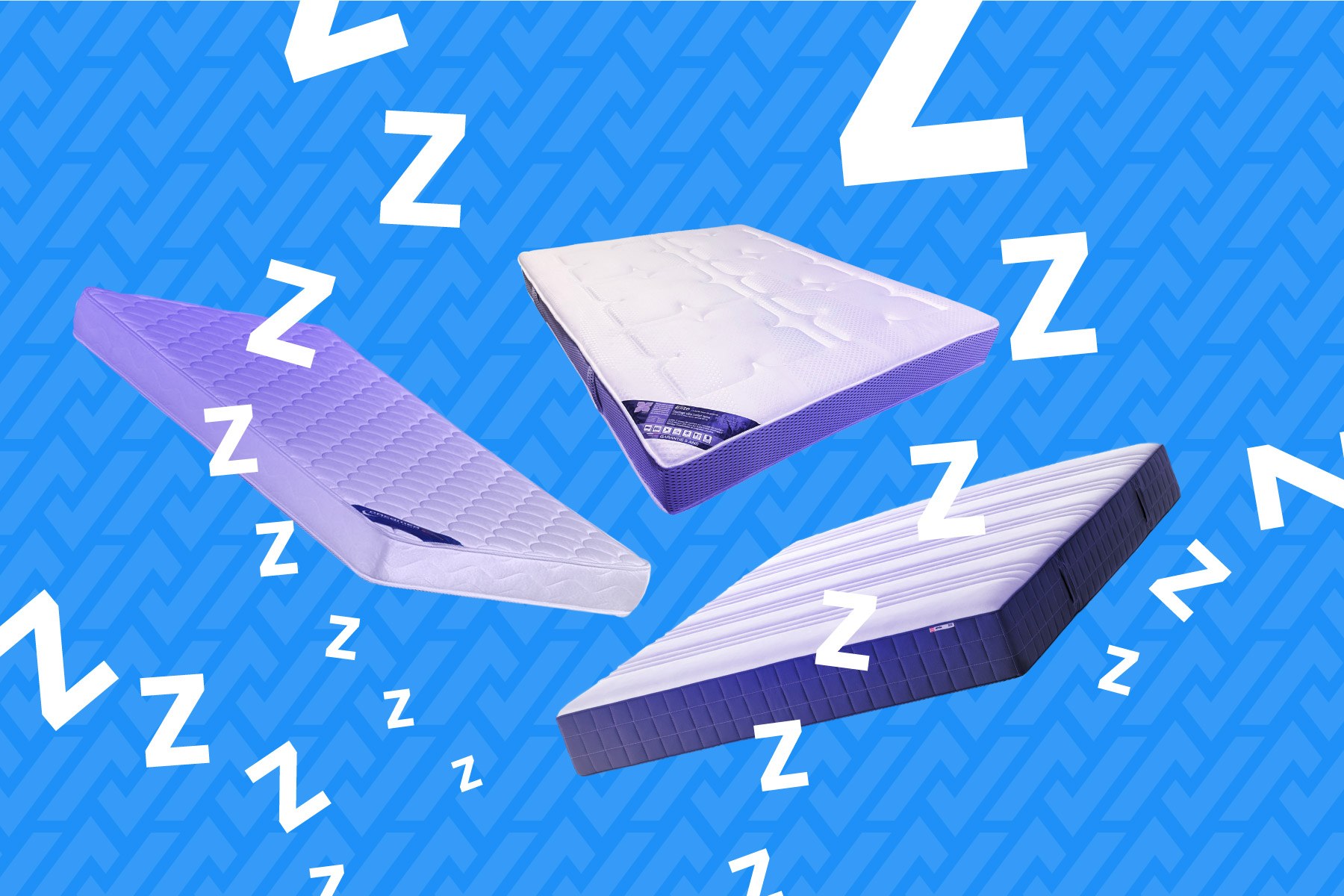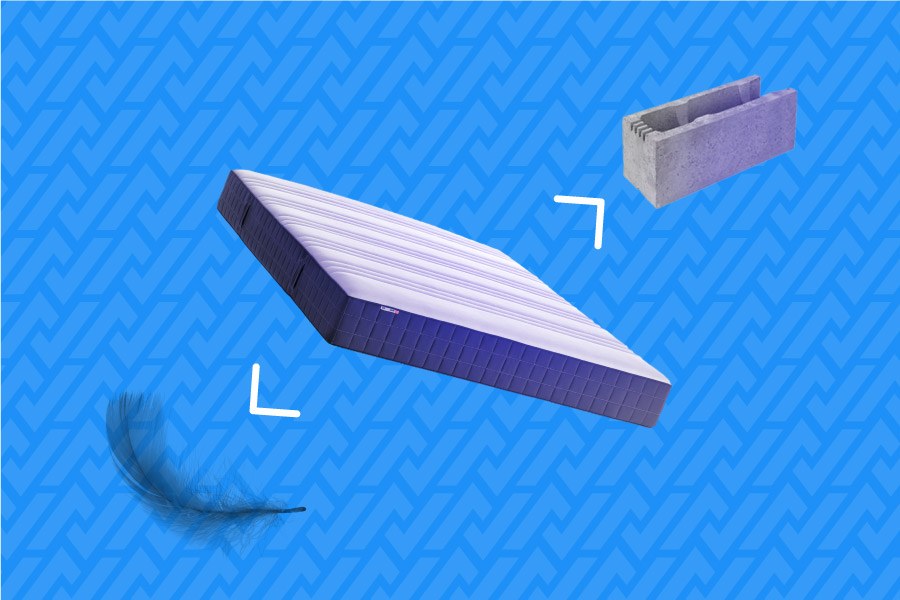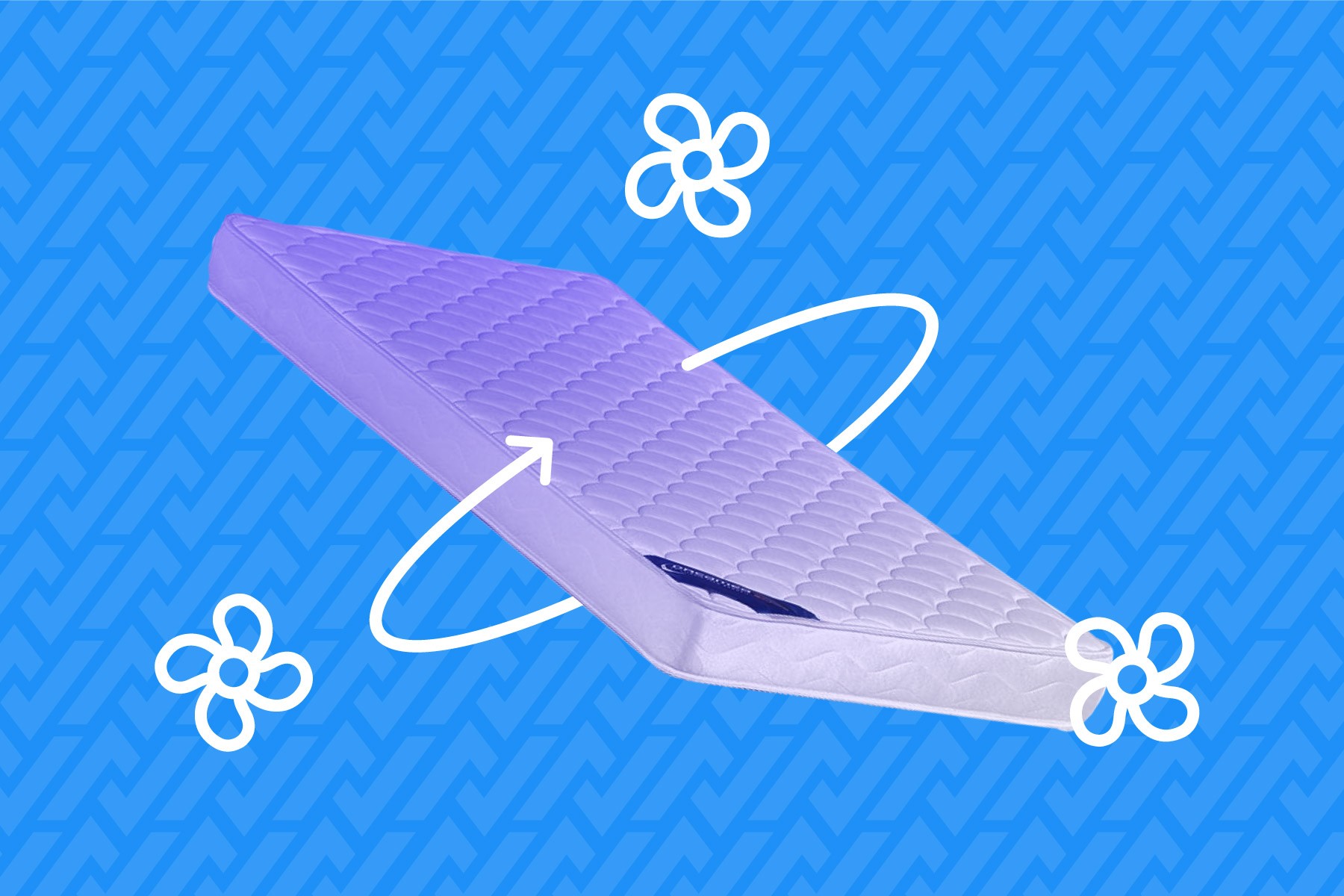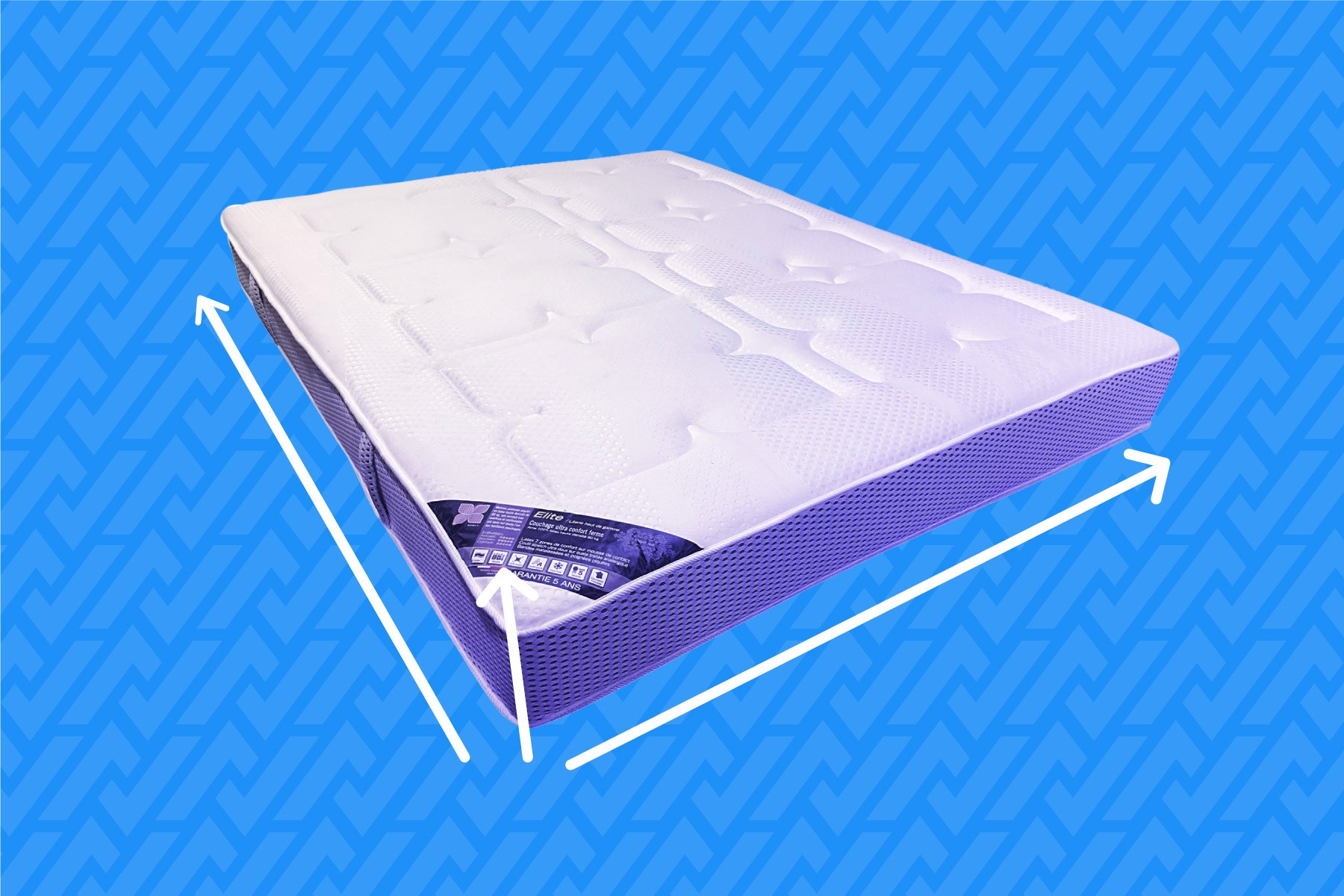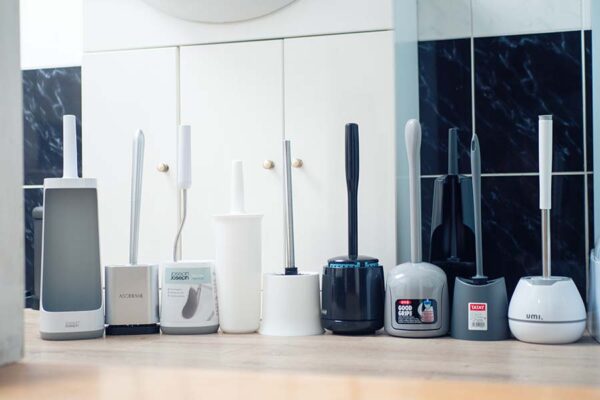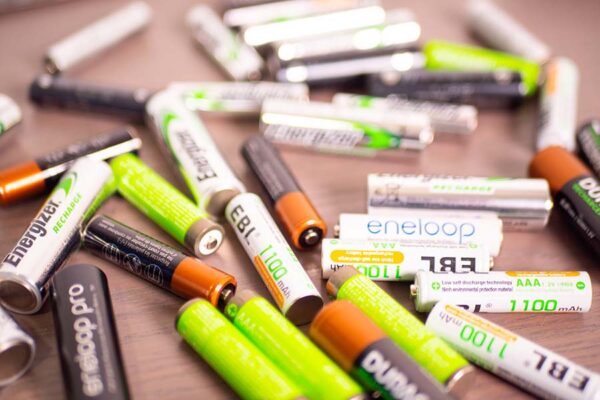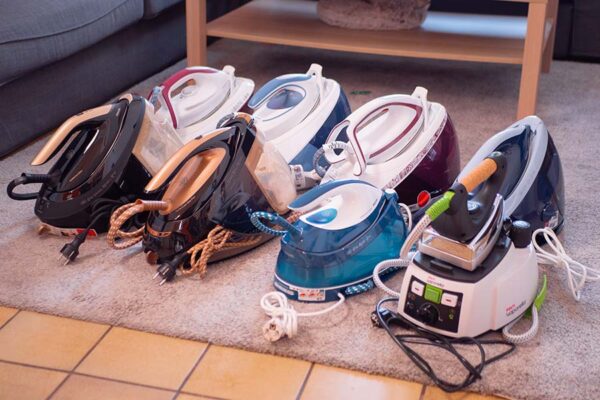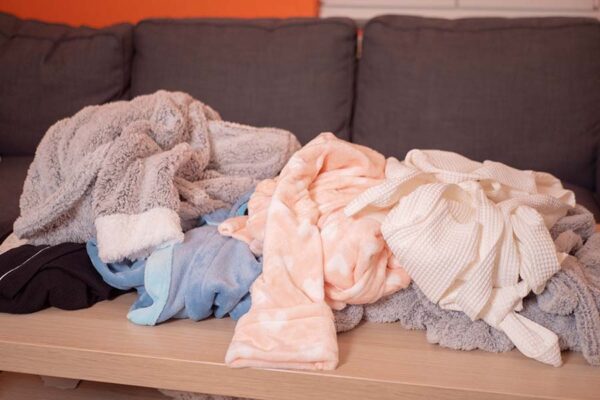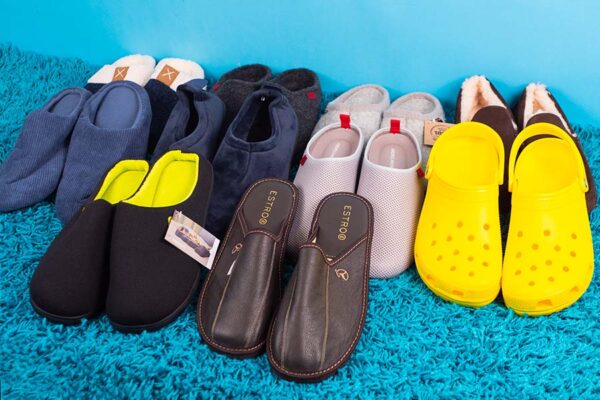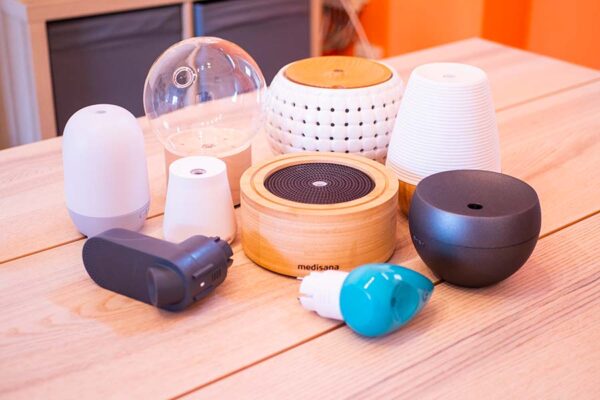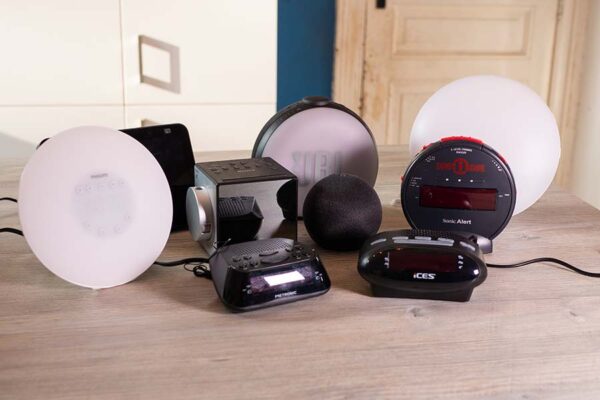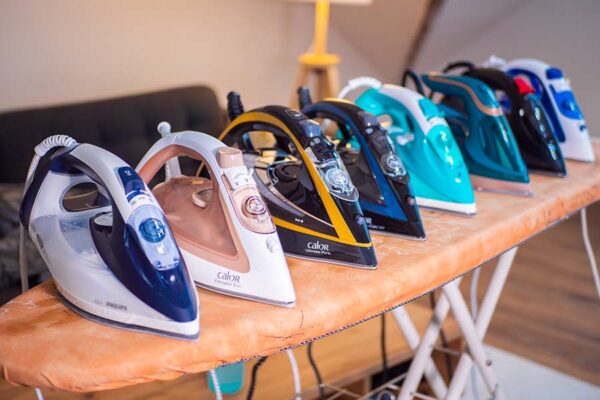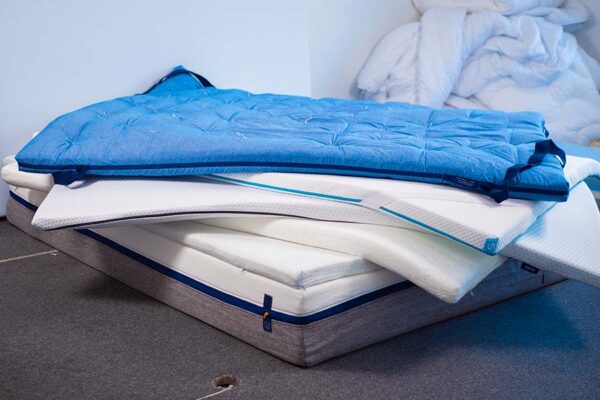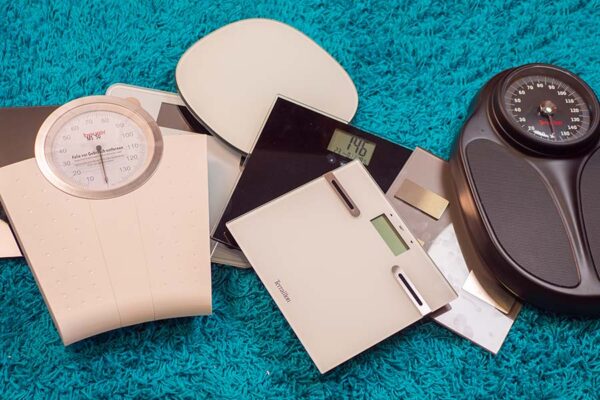Updated on 8 May 2023
Step 1: The type of mattress
Not all mattresses on the market are made of the same materials. Each material varies the support, the ventilation and also the price of the mattress. Here are the four main types:
- Latex mattresses can be of natural or synthetic origin. Synthetic latex is not recommended, however, as it is not environmentally friendly because it is made from petroleum-based components. Natural latex is slightly more expensive and is made from the sap of the rubber tree. These mattresses are appreciated for their elasticity and longevity.
- Foam mattresses are among the most popular because they are often the most affordable. In addition, they are suitable for almost all types of sleepers but are less durable.
- A popular variant is the memory foam mattress, which is known for its maximum comfort. This mattress is known for its maximum comfort, as it adapts perfectly to the body and prevents any movement transfers. However, the budget required is much higher.
- Spring mattresses are still a safe bet, as long as you choose quality over price. Among the different types of springs, pocket springs are now the most common. These mattresses are very resistant and are also much thicker.
Finally, you should know that some hybrid models tend to combine several materials to offer the sleeper all possible advantages.
Step 2: Firmness
This is crucial because it plays a big role in your comfort and, therefore, in the quality of your sleep. A mattress that is too firm will not be comfortable, while one that is too soft will create a “hammock” effect and cause back pain over time.
- The density of the mattress defines its firmness. It is calculated in kg/m³ and must be related to the sleeper’s weight. The larger the sleeper, the higher the density should be. Overall, a density of 75 kg/m³ is a good average for an adult of average build. Smaller people can be satisfied with 65 kg/m³, but a density of 85 kg/m³ or more is necessary for a larger person.
- The sleeping position is also a criterion to keep in mind. Those who sleep on their back or stomach should choose a firmer mattress than those who sleep on their side.
- The thickness of the mattress should ideally be between 18 and 25 cm. Below this, the support is not sufficient, but may be sufficient for an extra bed. For a child, the minimum is 15 cm.
- Latex and spring mattresses offer the highest density. Viscoelastic foam and memory foam mattresses are softer.

Step 3: Comfort
While the firmness of the mattress is important to ensure a peaceful night’s sleep over the long term, the comfort of the mattress is a more immediate criterion. This is the first feeling you get when you lie down on the mattress.
- The type of support depends on the material of the mattress. Latex and foam mattresses are known for their softness, while spring mattresses are generally more invigorating. The champion of all categories is the memory foam mattress, which follows the shape of the body and is therefore suitable for all morphologies.
- The filling is also important, as it is the top layer of the mattress. If it is thick and made of quality materials (wool, silk, etc.), it will provide a softer welcome.
- It can be interesting to place a mattress topper to increase the comfort of your mattress.
- As the comfort of the mattress is mainly a matter of feeling, it is essential to take the time to test the mattress. Physical shops generally offer a large showroom with test areas, while online shops offer a trial period of varying length during which you can change your mind. However, be sure to check the return conditions (time limit, free of charge or not) to avoid unpleasant surprises.
Step 4: Ventilation
This is the ability of the mattress to regulate both the moisture and the heat you generate while you sleep. A mattress with sub-optimal air circulation is less hygienic, due to the potential for mould growth, as well as affecting your sleep.
- Not all mattresses ventilate in the same way. Latex and spring mattresses are generally the best regulators of heat and moisture, but foam mattresses are less so. Foam mattresses are therefore not recommended if you sweat a lot.
- In addition to the material that forms the mattress cover, the ticking is also important. This is the fabric that covers the mattress. Some fabrics regulate moisture better than others. Natural materials are the champions in this area (cotton, wool, silk, bamboo, etc.).
- Some mattresses are equipped with two sides, to adapt to the season. The summer side is generally made of a lighter, more breathable ticking (cotton, linen, etc.), while the winter side tends to store heat (wool).
- To recognise the summer side from the winter side, manufacturers normally all use the same rule: the winter side is where the label is sewn on. The summer side is therefore blank.
Step 5: Bedding independence
Whether you sleep alone or in a company, sleep independence is the ability of the mattress to prevent you from feeling the movements of the other sleeper.
- This is all the more important if the two people in the bed are very different sizes if one is a light sleeper and/or if the other moves around a lot during sleep.
- While all current good quality mattresses offer good sleep independence, pocket spring mattresses are generally the most recommended, provided the number of springs is sufficient. Memory foam mattresses come a close second. Hybrid models that combine both (memory foam and springs) are therefore the best in this area.
Step 6: Dimensions
Although this may seem like a basic criterion at first glance, there are so many different mattress sizes that it is essential to know your needs before making a purchase.
- The first thing to do is to measure your bed base correctly so that the mattress fits perfectly. A few centimetres too much or too little can make a difference.
- The most common mattress length is 200 cm (sometimes 190 cm).
- The width varies depending on whether it is a single or double mattress. For one person, 90 cm is the most common width. For two people, the minimum width is 140 cm. However, Queen Size (160 x 200 cm) or even King Size (180 x 200 cm) mattresses offer greater comfort, especially if children and/or pets tend to invite themselves into your bed at night.
Best mattresses of the moment
| Our choice, Best mid-range | Best budget | Best high-end | Budget alternative | Mid-range alternative | High-end alternative |
|---|---|---|---|---|---|
 | 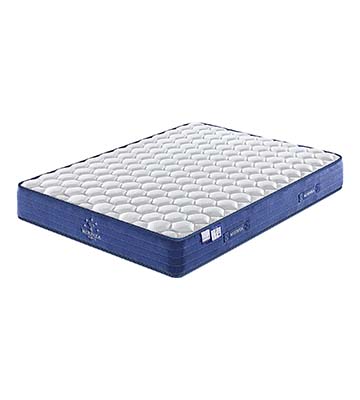 |  | 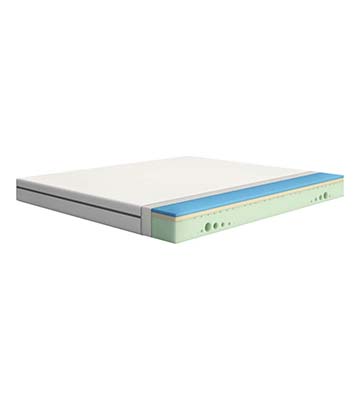 | 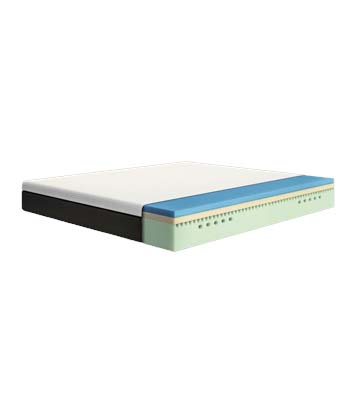 |  |
| Eve Hybrid Premium | Morphea Jade Premium | Tediber The Incredible | Emma One | Emma Original | Hypnia Supreme Hybrid |
| This thick mattress offers the perfect combination of comfort and support thanks to its high-quality design, while maintaining sleep independence. The cover is also suitable for sensitive skin. | This mattress focuses on comfort with its generous thickness and seven support zones. It is not easy to clean, but it is one of the most breathable mattresses we have tested, and the price is quite attractive. | It has advantages in terms of thermal regulation and heat removal with its cool, machine washable cover. It is also comfortable and supports well as it is soft on the surface yet firm. | Despite its thinness, this foam mattress has a healthy and hygienic design and provides good sleep independence. Ideal if you don't want to spend too much. | It is the best seller in France. This foam model provides back support and we liked its soft bounce and overall comfort. The cover is hygienic and it is suitable for sensitive skin. | Its integrated overlay and pocket spring technology make it soft and super comfortable. Although it is less hygienic and less cool than its competitor, it provides a high rebound and a lot of back support. |
| See the price on Amazon | £ 419.99 on Morphea | £ 790.00 on Tediber | £ 589.99 on Hypnia |
Translated by Ramsés El Hajje
